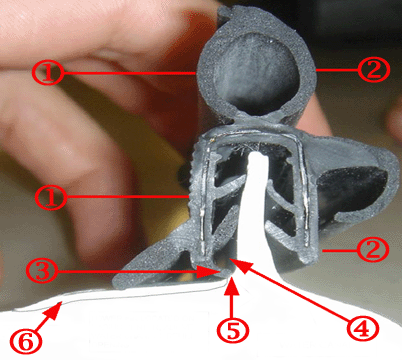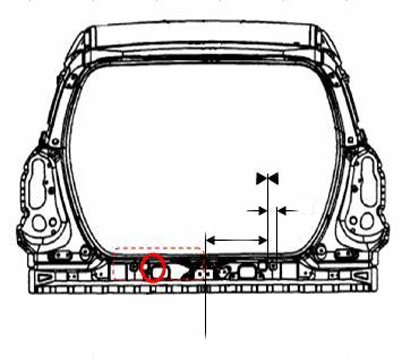Water Fonud In The Rear Spare Tire Compartment - keywords area corrosion floor handle harness hatch pass-through seal strip weather

| Subject: | Water Found In The Rear Spare Tire Compartment |
| Models: | 2009 Pontiac Vibe |
The following diagnosis might be helpful if the vehicle exhibits the symptom(s) described in this PI.
Condition/Concern:
A customer might comment of water in the spare tire well area, and or water standing in the rear hatch opening floor area. This condition could be cause by water entering from any of these below locations.
| • | Rear hatch wiring harness Pass-through: |
| • | Rear hatch wiper washer hose Pass-through: |
| • | Rear Emblem/Hatch handle: |
| • | Rear body weather-strip: |
Recommendation/Instructions:
These conditions can be repaired by following the below recommendations.
Rear hatch upper wiring harness Pass-through:
This pass-through is located at the top of the hatch opening, and if the grommet is not properly seated to the body it may cause water to get past the grommet and leak into the rear roof area.
Rear hatch wiper washer hose Pass-through:
This pass-through is located at the top of the hatch opening, and if the grommet is not properly seated to the body it may cause water to get past the grommet and leak into the rear roof area.
Rear Emblem/Hatch Handel:
Rear hatch "Pontiac Emblem" and or the rear hatch outside release door Handel seal may be leaking. This leak may cause water to leak from the rear hatch door panel and into the spare tire compartment area.
Important: f your vehicle was built before VIN # 9Z402741 it will need to have the rear body weather-strip modified. You will need to cut a water channel into the rear body weather-strip.
Open the rear hatch and look at the body weather-strip where it is molded together (bottom center) at the hatch striker. Once you locate the molded together seam you will need to make a mark on the weather-strip. This mark will be to the left and the right 255mm of the weather-strip joined area. You will need to cut outward 50mm from the previously marked 255mm locations. This will allow the weather-strip to properly drain the water into the run channel.

(1) Outboard Side
(2) Spare Tire Side
(3) Cut This Lip
(4) Water Canal
(5) Lower Fin Located On Radius Center, Above Water Channel Relief Opening
(6) Body Channel

Please follow this diagnostic or repair process thoroughly and complete each step. If the condition exhibited is resolved without completing every step, the remaining steps do not need to be performed.
